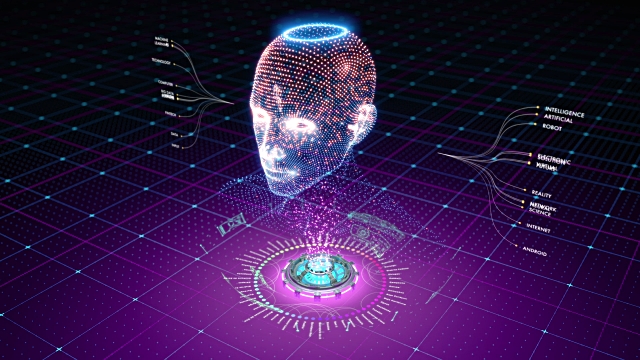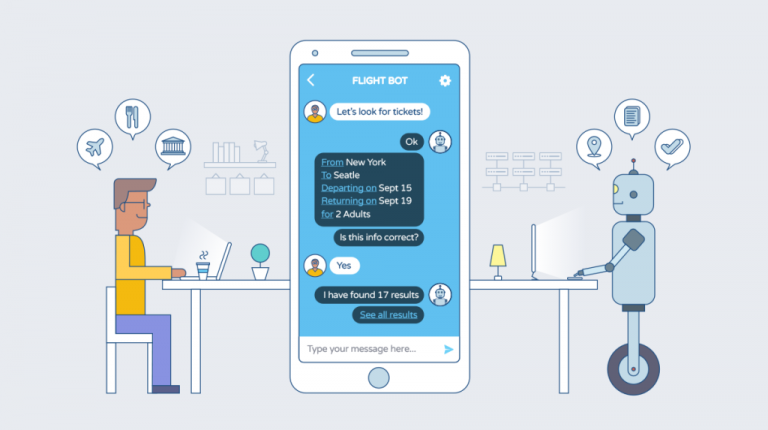
Gigantic tectonic shifts in technology with Machine Learning
Technology is swiftly evolving and one can easily see these gigantic tectonic shifts in the tech space. Machine Learning (ML) is among the standouts in the shifts and is considered a fast evolving and most research field. The machine learning market size is expected to grow from USD 1.03 Billion in 2016 to USD 8.81 Billion by 2022, at a Compound Annual Growth Rate (CAGR) of 44.1% during the forecast period. Even in its evolving phase, it is regarded as the pillar of future civilization.
ML is a form of artificial intelligence that automates data analysis to learn and adapt through experience to do specific tasks without explicit programming. It also helps data scientist, statisticians, business users etc to extract exceedingly accurate features from raw data of their product. This data can then be utilized by the machine or model to automatically do future forecasting. ML plays a vital role in developing business critical applications like data mining, natural language processing, image recognition and expert system.
There are various applications in the market that uses ML as the baseline technology. Some of these are Siri, Alexa, Cortana, and, most recently, Google Assistant all rely on it to recognize speech and synthesis, allowing them to understand or pronounce words they have never encountered before. On Netflix, Amazon, and Facebook, everything that is recommended to you depends on your search activity, likes, and previous behavior. These websites deliver recommendations across platforms, devices, and apps. Machines match sellers with buyers, movies with prospective viewers, photos with people who want to see them — all of which improves our lives and online experiences significantly.
Machine Learning is classified into two types:
- Supervised machine learning: The program is “trained” on a pre-defined set of “training examples”, which then facilitate its ability to reach an accurate conclusion when given new data. Most preferred techniques are using parametric/non-parametric algorithms, support vector machines, kernels, neural networks.
- Unsupervised machine learning: The program is given a bunch of data and must find patterns and relationships therein. It can accomplish using clustering, dimensional reduction, recommended systems, deep learning.
We can use the following development languages to develop ML applications in order to sort out business complexities and bring technological innovations:
- Python: Python is often the language of choice for developers to create ML applications. One of Python’s greatest assets is its extensive set of libraries. These libraries help researchers/mathematicians who are less equipped with developer knowledge to easily “do machine learning”. For example: Numpy is a library for python that helps us to solve many scientific computations. Also, we have Pybrain, which is for using machine learning in Python. Popular frameworks available in Python for developing ML application are Scikit-learn which supports many supervised and unsupervised learning algorithms. Examples include linear and logistic regressions, decision trees, clustering, k-means and so on. Tensor flow, Theano for deep learning, Pandas for data extraction and preparations.
- R Language: R is one of the most effective language and environment for analysing and manipulating the data for statistical purposes. Using R, we can easily produce a well-designed publication-quality plot, including mathematical symbols and formulae where needed. Apart from being a general-purpose language, R has numerous packages like RODBC, G models, Class and Tm which are used in the field of machine learning. These packages make the implementation of machine learning algorithms easy, for cracking the business associated problems.
- Java can also be considered a good choice for AI development. Artificial intelligence has a lot to do with search algorithms, artificial neural networks, and genetic programming. Java provides many benefits: easy use, debugging ease, package services, simplified work with large-scale projects, a graphical representation of data and better user interaction. It also has the incorporation of Swing and SWT (the Standard Widget Toolkit). These tools make graphics and interfaces look appealing and sophisticated.
- ML Dot Net: Microsoft recently launched ML.Net. ML.NET is a free, cross-platform, open source machine learning framework made specifically for .NET developers. ML.NET is used to develop and integrate custom machine learning models into .NET apps of any type – web, mobile, desktop, gaming, and IoT.
In short, you can say, ML solves problems that cannot be solved by traditional numerical methodologies!
References :


